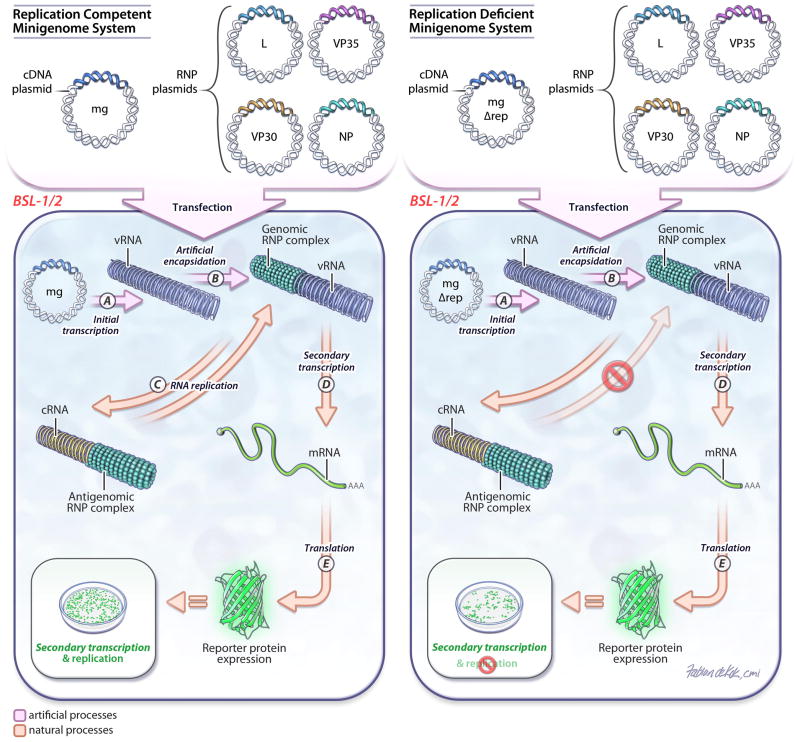Figure 2. Minigenome systems.
EBOV is shown as an example for VHF-causing negative-sense RNA viruses. A vRNA minigenome, encoding a reporter gene in the place of some or all of the viral open reading frames, is provided in the form of a cDNA plasmid (mg) and initially transcribed in cells either by endogenous RNA polymerases (RNA polymerase I or RNA polymerase II) or T7 RNA polymerase (A). The resulting “naked” vRNA then has to be complexed with the other RNP components, particularly the nucleoprotein (NP), in a process called artificial encapsidation (B). In a replication-competent minigenome system, virus genome replication then occurs via cRNA intermediates (C), which increases the number of vRNA templates available for use as templates for secondary transcription (D). The resulting reporter mRNAs are then translated into reporter protein (E), leading to reporter activity, which reflects both virus genome replication and transcription. In contrast, in a replication-deficient minigenome system, mutations in the antigenomic replication promoter abolish the production of additional vRNA molecules from cRNA replication intermediates so that the amount of vRNA is independent of genome replication. However, secondary transcription still occurs, resulting in reporter activity, but it is only dependent on virus transcription.

